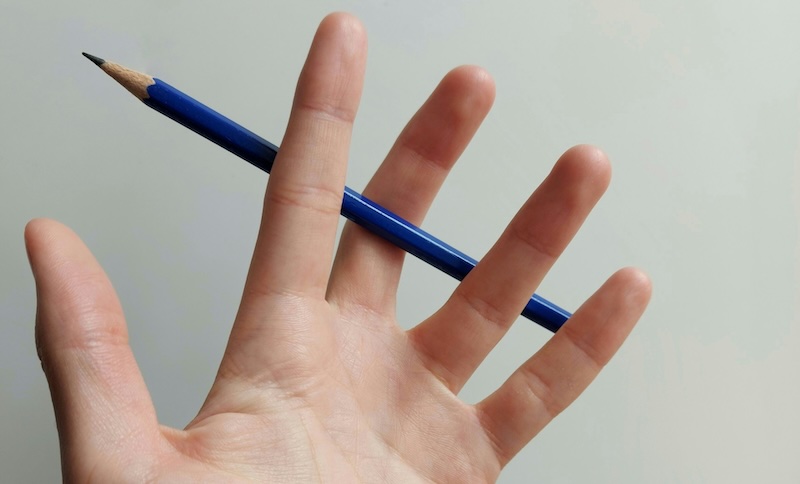What AI Can Learn from Nature
What if we built AI with nature in mind? As artificial intelligence evolves, we must consider its impact on ecological systems and social values. This article explores how nature’s principles—from resilience to regeneration—can help guide AI innovation toward a more ethical and sustainable future.
.webp)
Dr. Dr. Ana-Maria Olteteanu, a Professor of Artificial Intelligence and Sustainable Technologies at Tomorrow University, and Ahmad Rufai Yusuf, a learner pursuing the B.Sc. in Artificial Intelligence and Sustainable Technologies, joined forces to create this post. Reach out to them for further insights into AI and the revolutionary tools that are shaping our future.
Exploring the relationship between artificial intelligence (AI) and design
As technology continues to evolve, we're witnessing more and more groundbreaking applications of artificial intelligence (AI) in various industries. Perhaps nowhere is the pace of AI adaptation more rapid than in the world of design, and as a designer myself, I find it both thrilling and humbling. It's precisely this rapid progress in AI that led me to embark on an exploration of the relationship between "Artificial Intelligence (AI) & Design." In this article, we'll delve into some of the most exciting ways AI is transforming the design process, some design tools that are changing the way we design, and explore what the future may hold.
One of the most significant benefits of AI in the design process is its ability to speed up tasks and improve efficiency. AI can assist with tasks such as generating mockups, automating repetitive tasks, and suggesting design elements based on data and user feedback. This not only saves time but also provides designers with more data and resources to create better designs. But the advantages of AI in design go beyond just time-saving. AI has the potential to create a symbiotic relationship between designers and technology.
By learning from designers' past work and preferences, AI can become more personalized and effective over time. This type of collaboration is exemplified in tools such as Genius.
Genius Demo: Genius is a plugin tool designed for Figma, an interface design tool, that utilizes AI technology to assist designers in their design process. It does this by analyzing the designer's design patterns and providing suggestions and predictions for their next moves while they work live.
Some other tools that can help designers are Uizard, DALL-E, Majestic, ChatGPT, Magician, and Tome. Let’s have a look at each of them.
Uizard: Uizard is an AI-driven UI design tool that enables you to create wireframes, mockups, and prototypes swiftly. With its intelligent functionalities, Uizard can even translate hand-drawn sketches into wireframes and effortlessly transform wireframes into prototypes with just one click.
DALL-E and DALL-E 2: OpenAI has created DALL-E and DALL-E 2, both deep learning models that can produce digital images based on natural language descriptions referred to as "prompts."
Video of DALL-E: Creating UI components
Magestic: An AI-driven text-to-image generator, that allows you to bring your graphics and icons to life by simply speaking them into existence, all within Figma.
Magician: A Figma plugin that uses AI to do everything from copywriting to generating unique Icons from the text.
What are some potential applications of AI in design?
One can use AI for idea prototyping, but also there is value in “thinking with AI”. That is, considering the effect such a design exploration will have on the mind of the creator. Often, exploring fast with such tools allows the human user to grasp ideas quickly, or a design direction they might not have headed down to without these tools.
There is, of course, much satisfaction in the ability to create something from scratch at such speed, but this can also be overwhelming. One needs to be able also to slow down and figure out which one of the many paths proposed by the AI one wants to take (or feels it is authentic to take).
In her definition of creativity, Margaret Boden thought humans (and AIs) might be capable of three types of creativity: combinatorial, exploratory, and transformational. Combinatorial creativity involves the recombination of existing ideas or concepts in novel ways. Exploratory creativity involves the generation of new ideas through trial and error, experimentation, and exploration, in an existing conceptual space (of ideas, or a particular artistic style, etc). Transformational creativity involves the creation of entirely new concepts or ideas, transcending existing conceptual spaces and ways of thinking. If AI enables us to do more exploratory creativity, perhaps we humans will be able to perform more transformational and exploratory creativity, directing the conceptual spaces in which AI moves.
An important topic that came up during our exploration session was AI agents being trained on data (and sometimes styles) from existing human creators, without these creators being recognized or rewarded. Having an AI just take your work away and create more in that style is one of the major fears of creators. As a solution, we believe that creators should be able to own (or own rights to) the products created by AIs in their own style. Also, as AI models are generally trained on large datasets of works, but this training process is clear and documented, mathematical models of reward can be put in place so that all the creators whose works were used in the training process get rewarded proportionally to their participation by the commercialization of future designs of the AI. Of course, the tech or research team that built and trained the AI has their own contribution to the system, and ought to get corresponding rewards. These are our thoughts on potential solutions. We are, of course, as a society at the beginning of setting up reward systems for human-AI systems working together, or for AI systems trained on human data.
In conclusion, we believe that AI has the potential to greatly impact the design industry by streamlining the design process, improving human-AI interaction, and supporting designers' minds and processes. A key aspect of this is using AI in a way that enhances the creativity and intuition of human designers. Only then the human-AI interaction can be satisfactory, and AI-supported humans can produce high-quality designs that effectively meet the needs of users.
Generally, we need to approach AI in design with caution and awareness of its limitations and ethical implications. By doing so, we can create a future where AI and human designers work together to push the boundaries of creativity and innovation. As a designer, try out these tools today to determine what works best for you and how to make the most of them!
Intellectual property
In addition to exploring the benefits and limitations of using AI in design, our presentation also delved into the topic of intellectual property (IP) rights for AI-generated designs. As AI becomes increasingly integrated into the design process, it raises important questions about ownership and recognition of the designs it produces. It makes it compulsory for us to find a way to indicate that a particular design was created by AI, and, therefore, assign the appropriate IP rights to the creator of the AI.
As this would help to ensure that the AI creator receives recognition and compensation for their work or both of them.
However, there was some discussion around the feasibility of this idea, as well as the methods that could be used to assign IP rights to AI-generated designs. Some suggested using blockchain technology or mathematical equations to establish ownership and traceability of the design. Others raised concerns about the potential complications and challenges that could arise from implementing such a system. But one potential way to achieve IP rights for AI-generated designs is through the use of blockchain technology as Ikbal suggested. Blockchain is a decentralized ledger system that can provide transparency and traceability for transactions. By assigning a unique identifier to each AI-generated design and logging it on a blockchain, it would be possible to establish ownership and track the usage of the design.
Another potential method is the use of mathematical equations or algorithms to establish ownership, as Professor Ana-Maria suggested. An example is that an AI could be trained to generate a unique equation or algorithm for each design it creates, which would serve as a signature for that design. This signature could then be used to establish ownership and protect the design.
There are, however, some potential drawbacks to assigning IP rights to AI-generated designs. One concern is that it may further complicate the already complex system of IP law, and lead to disputes over ownership and attribution, it may also be difficult to determine the appropriate level of compensation for the AI creator, as their contribution to the design may be difficult to quantify.
Despite these challenges, our discussion around IP rights for AI-generated designs highlights the importance of considering the ethical implications of AI in design. As AI becomes more prevalent in the industry, it is crucial to establish clear guidelines and frameworks that ensure fair compensation and recognition for all contributors to the design process.
Therefore, integrating AI into the design process can revolutionize the industry and improve design quality. However, It is important to approach AI responsibly and thoughtfully, taking into account both the benefits and limitations, as well as the ethical implications, such as those surrounding IP rights. In this way, we can ensure fair recognition and compensation for all contributors while pushing the boundaries of creativity and innovation.
Connect with Ana and Ahmad and download our brochure to learn more about the B.Sc. in Artificial Intelligence & Sustainable Technologies.


.svg)
.svg)
.svg)



.webp)




.webp)
